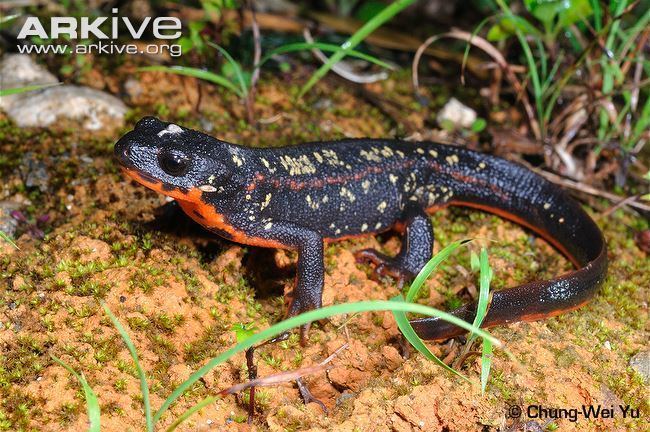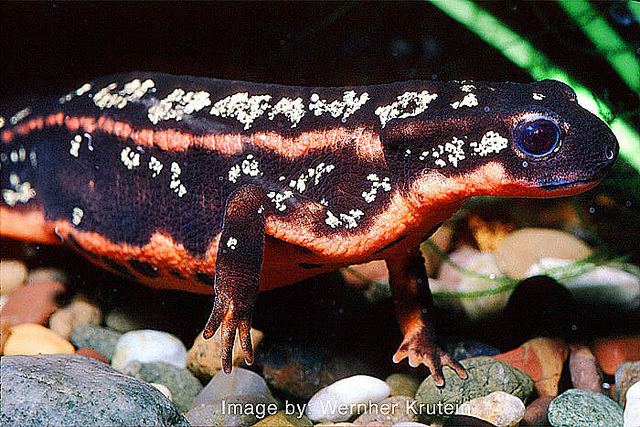Order Caudata Genus Cynops Higher classification Fire belly newts | Phylum Chordata Scientific name Cynops ensicauda Rank Species | |
 | ||
Similar Fire belly newts, Japanese fire belly newt, Amphibians, Salamander, Anderson's crocodile newt | ||
The sword-tail newt (Cynops ensicauda) is an endangered species of true salamander from the Ryukyu Archipelago in Japan. It has recently been placed on Japan's Red List of Threatened Amphibians. Sometimes, sword-tail newts are called fire-bellied newts, not to be confused with the common Chinese and Japanese species, because of their bright orange bellies, which serve as a warning to predators that they are poisonous. They can be differentiated from these two species by their large size, broader heads and (against Japanese fire-bellies) smoother skin. This newt ranges from brown to black above, occasionally with an orange dorsal stripe. Some individuals may have light spotting or speckling on their backs.
Contents

Sword-tailed newts can reach 12.8 cm (5.0 in) in males and 18 cm (7.1 in) in females. They are the largest living members of their genus. Females and males look significantly different in appearance. Females have much longer tails that are actually longer than the rest of their bodies. Males’ tails are much shorter and sometimes display a whitish sheen during breeding season.

Habitat and distribution

The sword-tailed newt is only found on the Ryukyu Archipelago, an island chain off the southern coast of Japan, as well as on many smaller surrounding islands. This newt's habitat is slow, cool, stagnant bodies of water. They are commonly found in man-made structures such as rice paddies, road-side ditches, and cattle waterholes. The two known subspecies of sword-tailed newt are C. e. ensicauda and C. e. popei. Due to the subtropical climate of its native habitat, it is more tolerant of high temperatures than other Cynops. The sword-tailed newt has no predators, so deforestation and land development are the main reasons for their endangerment.
Breeding places are being frequented by only a fourth of the population that was breeding 14 years ago. This lack of breeding is another key reason for them becoming endangered. Many of their breeding places are in roadside ditches and gutters, which can lead to them being run over. Sword-tail newts are extremely territorial, thus making moving their breeding places difficult.
Trends and Threats

The once-teeming populations of C. ensicauda have declined alarmingly in recent years. There has been massive habit destruction, especially of breeding sites, because of land development. Large, voracious fish of the genus Tilapia have been introduced into traditional breeding ponds. Even where supposedly suitable forest habitat has been preserved, the construction of access roads with concrete drainage ditches often proves fatal. The animals wander about to forage on rainy days and tumble into the ditches, where they are baked by the sun when the rain ceases (Goris and Maeda 2004).

